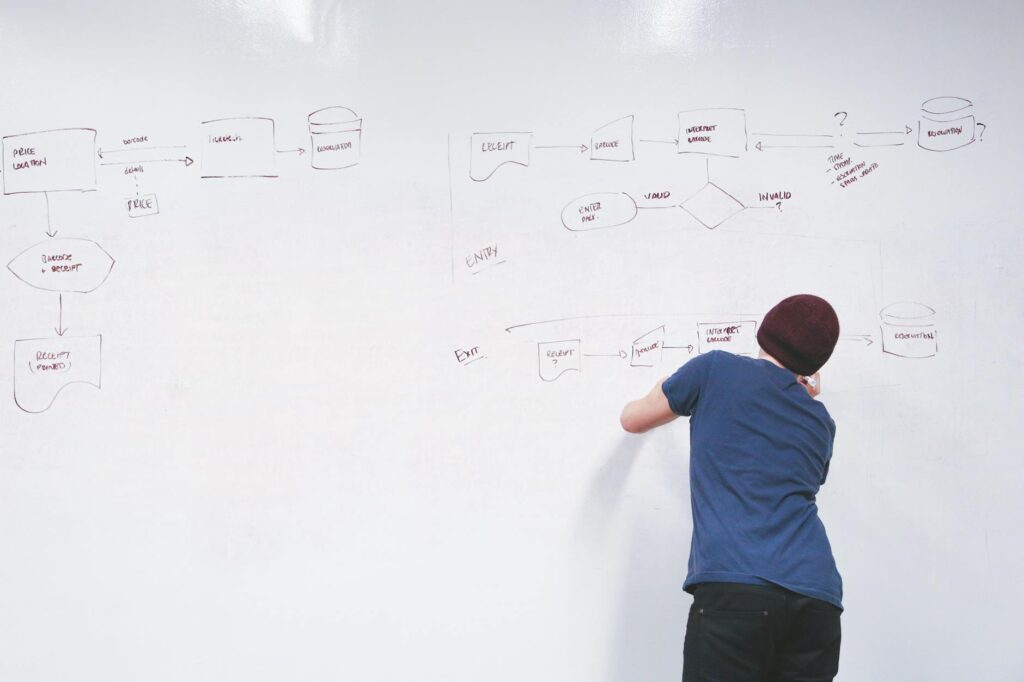What is design thinking?

What is design thinking?
Design thinking has become a buzzword in the realms of innovation, creativity, and problem-solving. But what does it really mean? At its core, design thinking is a human-centered approach to tackling complex problems. It’s a methodology that encourages teams to focus on the needs of the people they are designing for, making it essential in fields like product development, UX design, and even everyday life.
The Essence of Design Thinking
Design thinking isn’t just about aesthetics or making things look good. It’s about understanding and empathizing with users to create effective solutions. This approach emphasizes iterative prototyping and testing, allowing ideas to evolve based on user feedback. It’s akin to a chef refining a recipe; a little salt here, a pinch of spice there, until you achieve the perfect flavor.
Key Principles of Design Thinking
-
Empathy: Understanding users’ needs is the cornerstone of design thinking. By putting yourself in the user’s shoes, you can better grasp their challenges and motivations. This creates a foundation for developing solutions that truly resonate with users.
-
Define: After gathering insights, it’s crucial to define the core problems. This step involves synthesizing information to articulate the issue clearly, ensuring that everyone involved is aligned on the challenges at hand.
-
Ideate: Once the problem is defined, it’s time to brainstorm. During this phase, no idea is too far-fetched. The goal is to explore a wide range of solutions. Think of it as a creative storm where every thought counts.
-
Prototype: Prototyping is about turning ideas into tangible forms. This could be a sketch, a digital mockup, or even a physical model. The essence of prototyping is to create something that can be tested and refined.
-
Test: Testing allows you to gather feedback on your prototypes. This phase is iterative; you might go back to the ideation stage based on what you learn, refining your solution until it meets user needs effectively.

Photo by Startup Stock Photos
Why is Design Thinking Important?
In a world where user expectations are continually evolving, design thinking provides a framework for staying ahead. It enables organizations to remain agile, fostering innovation in ways that traditional methods often can’t match. This approach encourages a culture of collaboration, creativity, and openness, essential for any organization looking to thrive in today’s fast-paced environment.
Moreover, design thinking can lead to better business outcomes. According to a McKinsey report, organizations that adopt design thinking principles often outperform their peers in terms of revenue and customer satisfaction. This is because they are not just creating products but are also delivering experiences that truly engage users.
Real-Life Applications of Design Thinking
Design thinking isn’t confined to tech companies or startups; it has real-world applications across various sectors. Here are a few examples:
-
Healthcare: Hospitals are using design thinking to improve patient experiences. By understanding patient journeys, they can streamline processes, making visits less stressful.
-
Education: Schools are embracing design thinking to create curricula that better meet students’ needs. This leads to more engaging and effective learning environments.
-
Retail: Brands are leveraging design thinking to curate shopping experiences. Understanding the customer journey allows them to optimize everything from store layouts to online interfaces.
For a deeper understanding of how design thinking is reshaping industries, check out HBS Online and McKinsey.
How to Implement Design Thinking in Your Life
You don’t need to be a designer or part of a large organization to implement design thinking. Here’s how you can apply its principles in your daily life:
-
Start with Empathy: Observe and listen to the people around you. Whether it’s family, friends, or colleagues, understanding their needs helps you create solutions that truly resonate.
-
Define Problems Clearly: Take time to articulate the challenges you face. Writing them down can provide clarity and open up pathways for solutions.
-
Brainstorm Freely: Set aside judgment during brainstorming sessions. Allow yourself and others to express even the wildest ideas. You never know what gems might emerge.
-
Create Prototypes: This doesn’t have to be complicated. Sketch out your idea or create a simple model. The goal is to visualize your thoughts.
-
Seek Feedback and Iterate: Once you have a prototype, share it with others. Use their feedback to make improvements and refine your idea.
Conclusion
Design thinking is more than just a methodology; it’s a mindset that encourages empathy, creativity, and problem-solving. Whether you’re a business leader, teacher, or parent, incorporating design thinking into your approach can lead to innovative solutions that meet real needs.
By embracing this human-centered approach, you open the door to new possibilities, ensuring that your ideas not only function but also connect with those they aim to serve. So why not give it a try? Start applying design thinking today, and watch how it transforms your projects and interactions!